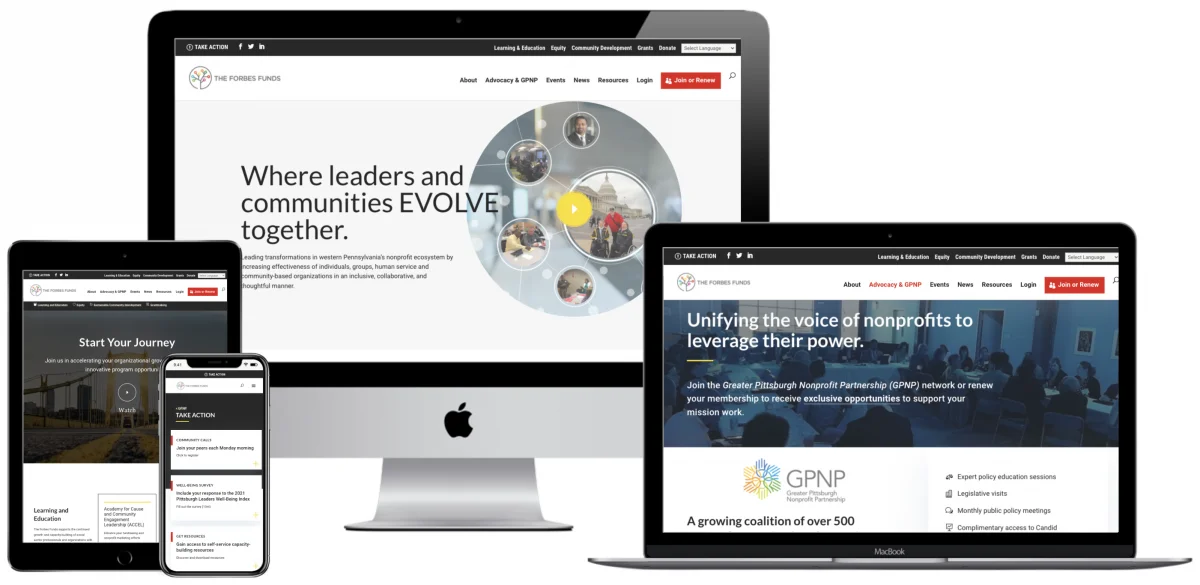Studies have shown that the average consumer is exposed to as many as 10,000 brand messages a day. Now more than ever, marketers are competing for attention. They are trying to find new and creative ways to get attention, to keep it, and to turn it into action. Thus, more brands are turning to storytelling as a way to create an emotional connection with the audience that will lead them to make a purchase, and maybe over time become loyal advocates of the brand. Nonprofits can also benefit from storytelling immensely, and one of the greatest canvases a nonprofit can use to nail its storytelling is its website. Here are some tips for storytelling with nonprofit web design, with examples from the nonprofit Teach for America’s website.
Don’t make it all about you.
Of course, the purpose of the website is to highlight the organization and what it does. But sometimes nonprofits get so caught up in describing what the organization does and how it works that they fail to infuse real human voices into the messaging. This can create a distance between website visitors and the organization.
Nonprofit websites should center the actual voices and stories of those that the organization is helping, and those that are doing the work on the ground. The Teach for America website does a great job with this right away. The first text the reader sees quickly states the goal of the organization, and it is placed next to images of students and teachers.
Quickly present a conflict.
Nonprofit websites have the tricky task of boiling down problems that are often extremely complex into something that visitors can quickly digest. Thus, the problem should be presented in clear terms early on. Teach for America does this by employing powerful statistics to paint a picture of
Share how your nonprofit is addressing the problem.
After presenting the problem, a nonprofit’s website should succinctly explain how the organization is addressing said problem. Teach for America describes how an opportunity exists to make change, and then gives an overview of how they are working as an organization to make that change happen.
Describe impact in macro and micro terms.
In other words, be sure to include information about total impact, as Teach for America does by saying “Since 1990, nearly 60,000 leaders have impacted millions of students as Teach For America corps members”. In addition, include specific stories of people who have been impacted by the work of the organization. Teach for America does this by presenting impact numbers along with a section for stories from alumnae, students, and communities.
Always include a call-to-action.
You don’t want your website to sound too sales-y or preachy, but at the same time you do want the audience to be able to easily contribute to the organization without having to do a lot of digging. After presenting a compelling story, you should incorporate a call-to-action that is easy to see. For Teach for America, this means incorporating a “Join the Corps” button at the bottom of the homepage, which the viewer will see after scrolling all the way down. Teach for America also includes the same button at the very top of the page for those who do not scroll all the way down, but it is not centered. It is kept in the top right corner so it can be easily found without taking attention away from the storytelling.
Incorporate interactivity.
When websites have interactive elements, such as animation upon scrolling, it gives the viewer a sense of agency over the narrative. Interactivity also draws the eye
Include video content. A common given to writers is “Show, don’t tell.” This can be applied to nonprofit websites, where many times something complex can be explained in much simpler terms through the use of video. Wistia found that people spent on average 2.6x more time on pages with video than without. On Teach for America’s “What We Do” page, they include a video called “How Change Happens”, which uses engaging storytelling and imagery to convey the essence of what the organization does.
These tips are just a few guidelines for incorporating storytelling into nonprofit web design. All nonprofits have unique stories to tell, and there should be a lot of conversation and thought put into that story before the website is built. Incorporating these tips can help transform a website from something dry and uninspiring to something meaningful that forges an emotional connection with visitors and incites them to take action. Put simply, incorporating storytelling into a nonprofit’s web design can lead to further impact, so it is a worthwhile investment.
Learn more about nonprofit web design
Interested in learning more about nonprofit website design and development? Great! Key Medium, Philadelphia’s leading purpose-driven digital agency, has invested an extensive amount of resources to develop exclusive (and free!) nonprofit marketing resources to help you grow impact. In addition, we offer a discount through Coding for Causes when available, as well as almost a dozen nonprofit web design case studies published for your reference. Interested in a quote? Simply schedule a time before getting a quote here.

Leah Bury is a writer and passionate about various social justice issues, to say the very least. She’s worked in a variety of organizations, from an education technology startup to a nonprofit venture philanthropy fund, and has in the past supported Coding For Causes in spreading equity and community education on a City-wide scale. She likes to hike, travel, read, and enjoys music festivals.

